Maritime Agency II
- Start date: Coming soon
- End: -
- Days: 12 (6 weeks)
- Total duration: 30 hours distributed in a weekly class of 2.5 hours.
- Hybrid mode (simultaneous on-site and distance learning)
Scope
Explores current global trade challenges and their regulation. Delves into maritime agency functions and regulations. Practical approach following the ship operating process.
Objective: To train in detailed knowledge of maritime agency. Aimed at foreign trade professionals and shipping agency employees.
The growing development of international business and the flow of foreign trade in the current context of a globalized world -with political, economic and military crises, together with the global post-pandemic scenario-, have brought to light the challenge of new practices and regulations, which requires permanent updating in the study of foreign trade.
The Agency II Course proposes to deal in detail and deepen the knowledge related to the activity of maritime agency, addressing its functions, associated problems and regulatory frameworks applicable to this activity.
The course proposes a theoretical and practical approach to the different topics, following the route and operation of a vessel, from its arrival at Recalada to its final destination in port.
Objectives
- To train and provide the trainees with in-depth theoretical and practical knowledge related to the maritime agency function.
- To provide the attendees with an updated overview of the concepts, institutions and tools that regulate the maritime agency activity.
- To provide attendees with sufficient elements of judgment to face and frame various common problems and facilitate decision making in value chains.
Addressed to
Employees of maritime agencies and ATAs, port terminals, shippers, exporters, importers, and any professional or person related to foreign trade, both in the public and private sectors, who wish to deepen their knowledge related to maritime agency activities.
Modality
Classes are taught in hybrid form (face-to-face and distance simultaneously), with the assistance of virtual media and the active participation of the student.



